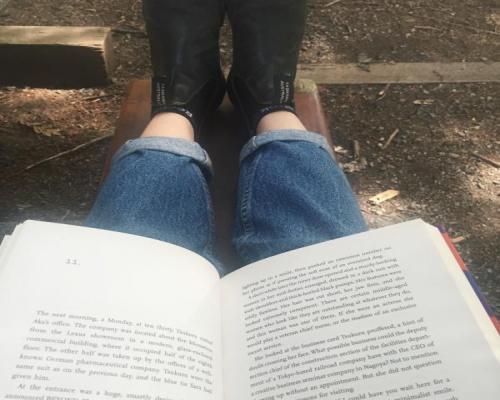Getting a peek of an avid reader’s bookshelf is one of life’s simple pleasures. If you’ve ever shown up to a house party and gone straight to the host’s bookshelf, you know how satisfying it is to snoop through other readers’ libraries. The editors of Room love reading (obviously), and we’re giving you a glimpse of our shelves and sharing how we get the most out of our sacred reading time.
Getting a peek of an avid reader’s bookshelf is one of life’s simple pleasures. If you’ve ever shown up to a house party and gone straight to the host’s bookshelf, you know how satisfying it is to snoop through other readers’ libraries. The editors of Room love reading (obviously), and we’re giving you a glimpse of our shelves and sharing how we get the most out of our sacred reading time.
First up, Room‘s Contest Coordinator and co-editor of 40.1, Kayi Wong!

What makes a great reading space?
As long as it’s comfy, cozy and has natural light, I’m sold. Translation: bed, or an empty beach and park during warm weather. In reality, I am happy with a bus that has no loud talkers—my kind of road rage.
Do you like to organize or display your books in a particular way?
I categorize them by fiction (in chronological order), and non-fiction (by subject matters). Following that, I set aside a shelf for #canlit and writing-related books, one for comics/graphic novels and current favourites, and the last one for magazines and design books. Finally, like most readers, I like to keep books that are on the top of my to-read list and borrowed books on a stack of their own. Even though I have had to shelve books for various jobs in the past, tidying up my bookshelf is my favourite “chore” and I find it immensely therapeutic.
What are your reading rituals?

Making sure I read, to get any amount of reading done whenever and wherever I can, is my only ritual. Perhaps it can be counted as a ritual that I’ve become realistic with my reading goals and have started to set aside shorter forms (comics/graphic novels, poems, short stories and essays) for periods when I know I am going to have a short attention span, i.e. early mornings, and transit time. Longer forms are saved for when I have at least 30 minutes or more of dedicated reading time—before bedtime and weekends.














